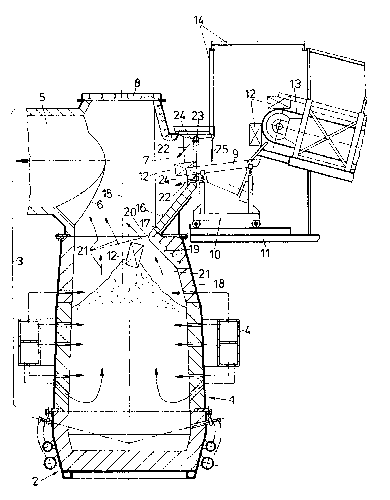Some of the information on this Web page has been provided by external sources. The Government of Canada is not responsible for the accuracy, reliability or currency of the information supplied by external sources. Users wishing to rely upon this information should consult directly with the source of the information. Content provided by external sources is not subject to official languages, privacy and accessibility requirements.
Any discrepancies in the text and image of the Claims and Abstract are due to differing posting times. Text of the Claims and Abstract are posted:
| (12) Patent Application: | (11) CA 2054920 |
|---|---|
| (54) English Title: | PLANT FOR THE PRODUCTION OF MOLTEN METALS |
| (54) French Title: | INSTALLATION DE PRODUCTION DE METAUX LIQUIDES |
| Status: | Deemed Abandoned and Beyond the Period of Reinstatement - Pending Response to Notice of Disregarded Communication |
| (51) International Patent Classification (IPC): |
|
|---|---|
| (72) Inventors : |
|
| (73) Owners : |
|
| (71) Applicants : |
|
| (74) Agent: | SMART & BIGGAR LP |
| (74) Associate agent: | |
| (45) Issued: | |
| (22) Filed Date: | 1991-11-04 |
| (41) Open to Public Inspection: | 1992-05-20 |
| Availability of licence: | N/A |
| Dedicated to the Public: | N/A |
| (25) Language of filing: | English |
| Patent Cooperation Treaty (PCT): | No |
|---|
| (30) Application Priority Data: | ||||||
|---|---|---|---|---|---|---|
|
ABSTRACT OF THE DISCLOSURE:
A plant for the production of molten metals
includes a melting vessel in whose wall burners and
optionally oxygen-containing-gas feeding ducts are
installed and on whose upper end a charging device as
well as a gas evacuation duct receiving the offgases
forming enter.
In order to enable the continuous charging of the
melting vessel by avoiding any unintentional escape of
gas from the melting vessel, both the gas evacuation
duct and the charging means run into the upper end of
the furnace shaft laterally and approximately
diametrically opposite each other. The charging means
projects into a charging opening brushed over by a gas
curtain and an intake chute for charging material is
provided below the charging opening in a manner
directed towards the center of the furnace shaft. The
intake chute forms a projection protruding inwardly
like a nose relative to the wall of the furnace shaft
and followed by a wall section inclined relative to the
lower end region of the furnace shaft and passing over
into the wall of the furnace shaft.
Note: Claims are shown in the official language in which they were submitted.
Note: Descriptions are shown in the official language in which they were submitted.

2024-08-01:As part of the Next Generation Patents (NGP) transition, the Canadian Patents Database (CPD) now contains a more detailed Event History, which replicates the Event Log of our new back-office solution.
Please note that "Inactive:" events refers to events no longer in use in our new back-office solution.
For a clearer understanding of the status of the application/patent presented on this page, the site Disclaimer , as well as the definitions for Patent , Event History , Maintenance Fee and Payment History should be consulted.
| Description | Date |
|---|---|
| Inactive: IPC deactivated | 2011-07-26 |
| Inactive: IPC from MCD | 2010-02-01 |
| Inactive: IPC expired | 2010-01-01 |
| Inactive: IPC from MCD | 2006-03-11 |
| Inactive: IPC from MCD | 2006-03-11 |
| Inactive: IPC from MCD | 2006-03-11 |
| Application Not Reinstated by Deadline | 1998-11-04 |
| Time Limit for Reversal Expired | 1998-11-04 |
| Deemed Abandoned - Failure to Respond to Maintenance Fee Notice | 1997-11-04 |
| Application Published (Open to Public Inspection) | 1992-05-20 |
| Abandonment Date | Reason | Reinstatement Date |
|---|---|---|
| 1997-11-04 |
Note: Records showing the ownership history in alphabetical order.
| Current Owners on Record |
|---|
| VOEST-ALPINE INDUSTRIEANLAGENBAU GMBH |
| Past Owners on Record |
|---|
| ALFRED WEBER |
| JOHANN AUER |
| WILFRIED PIRKLBAUER |